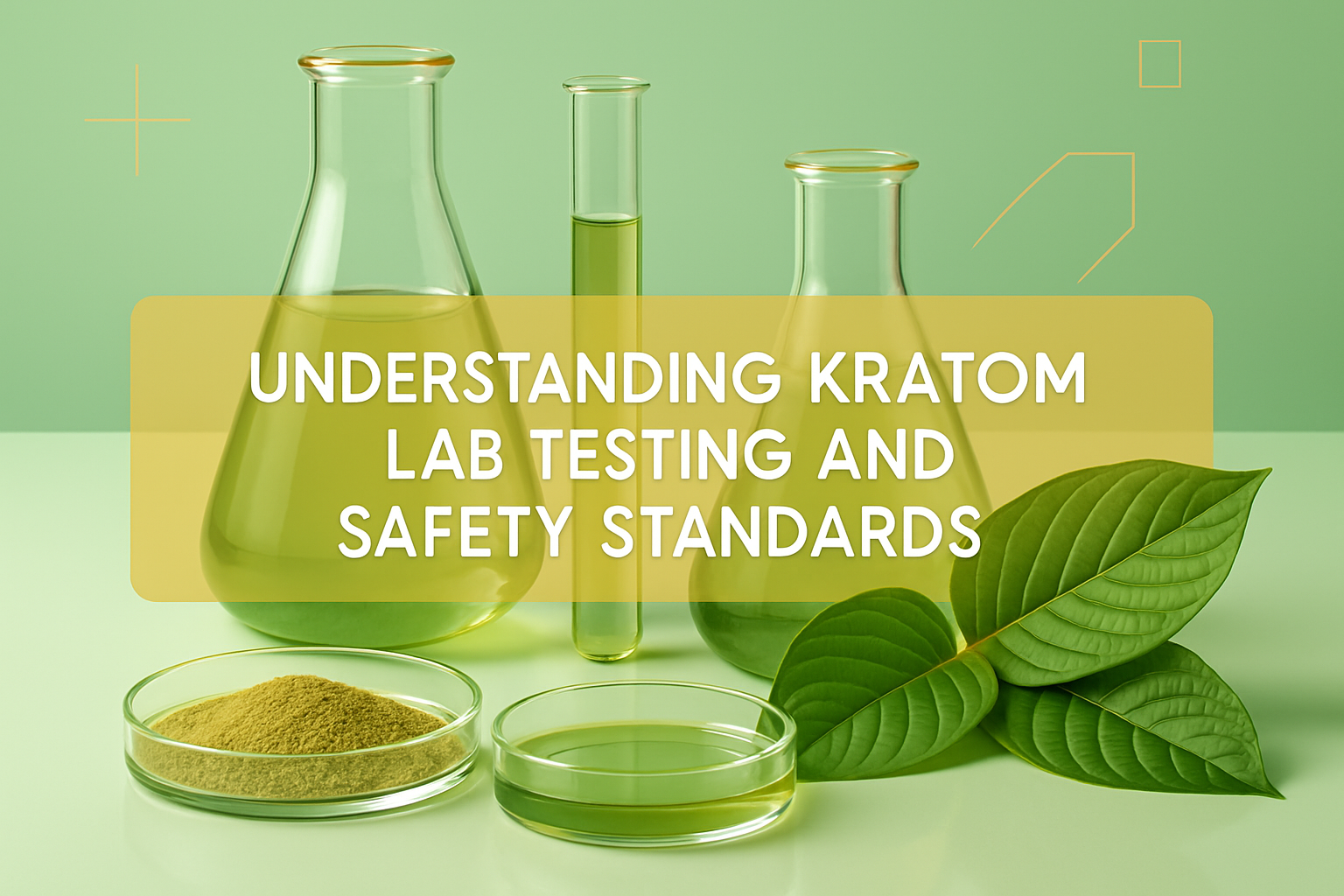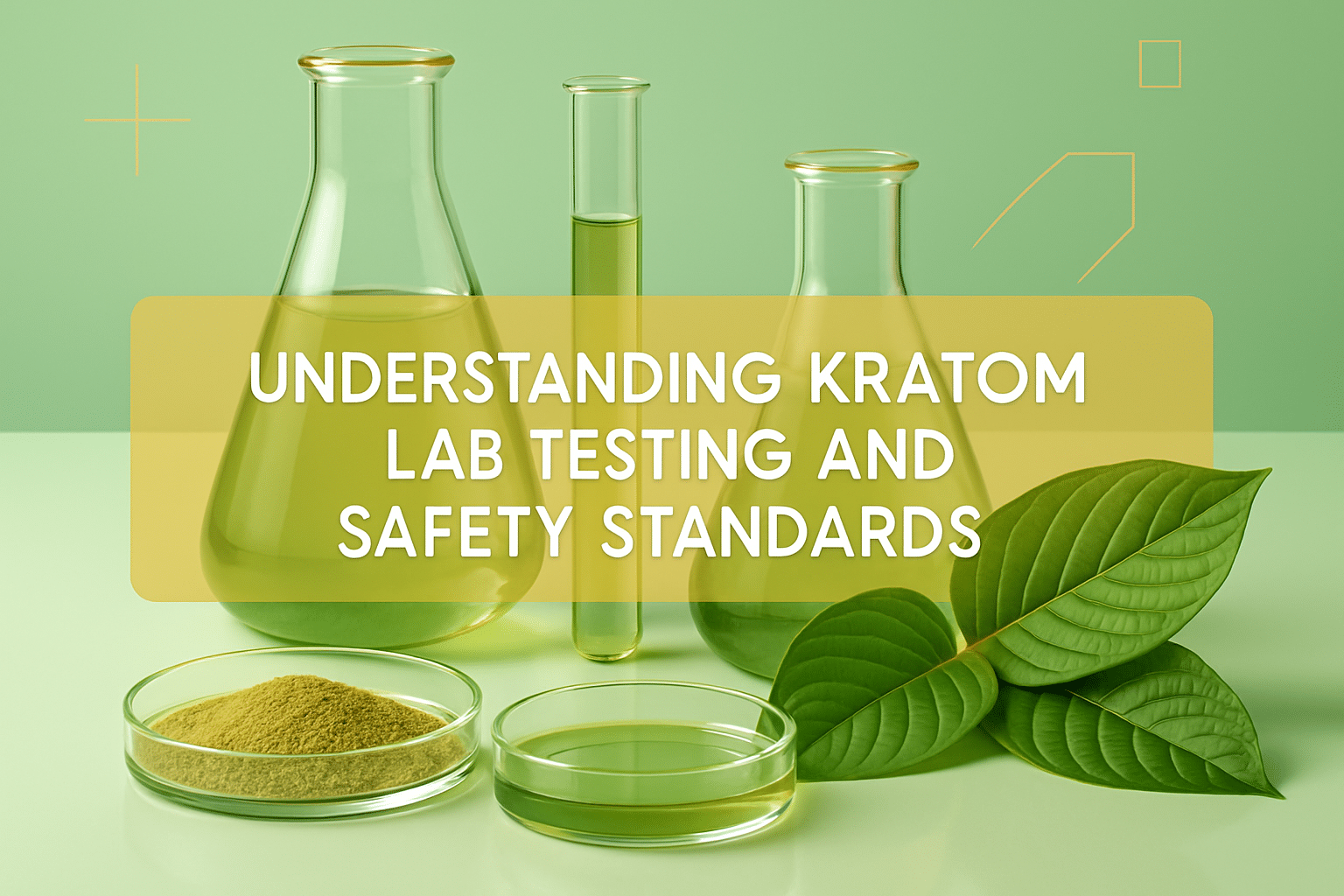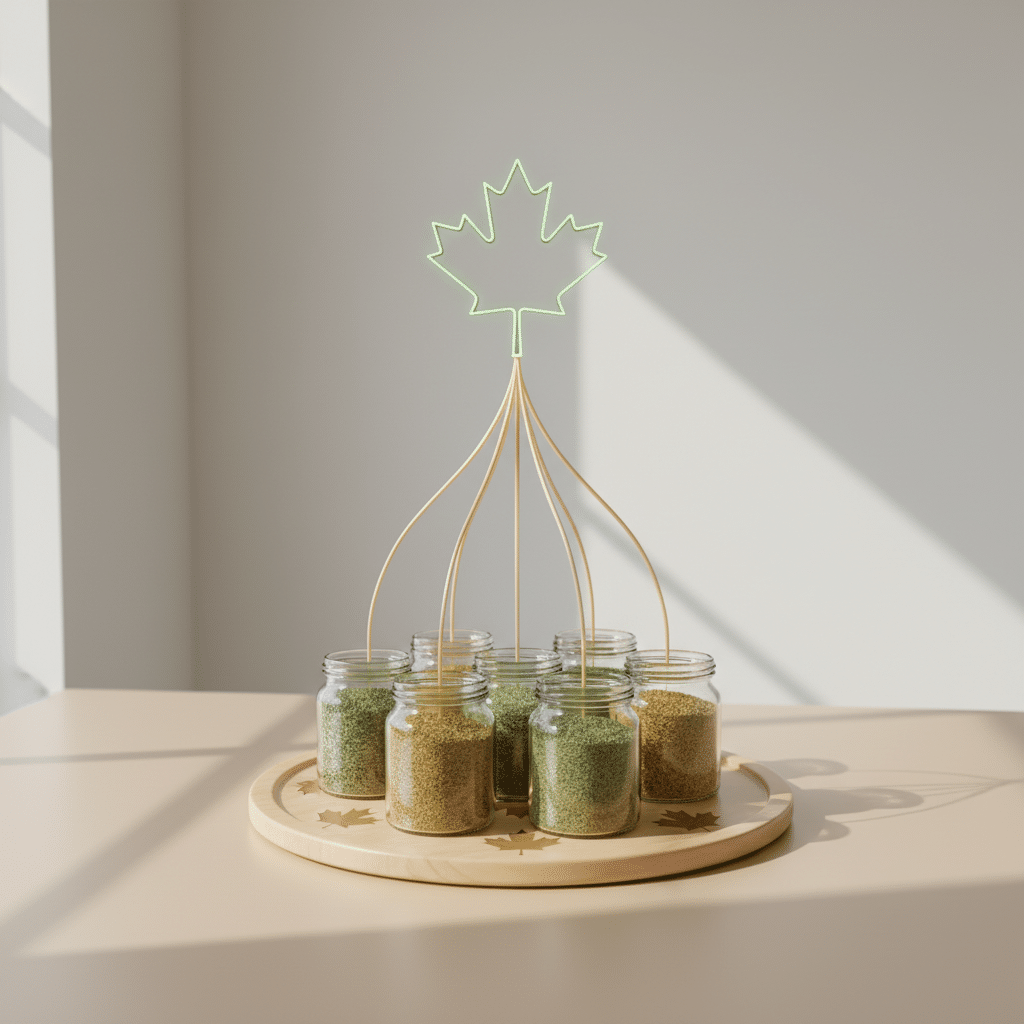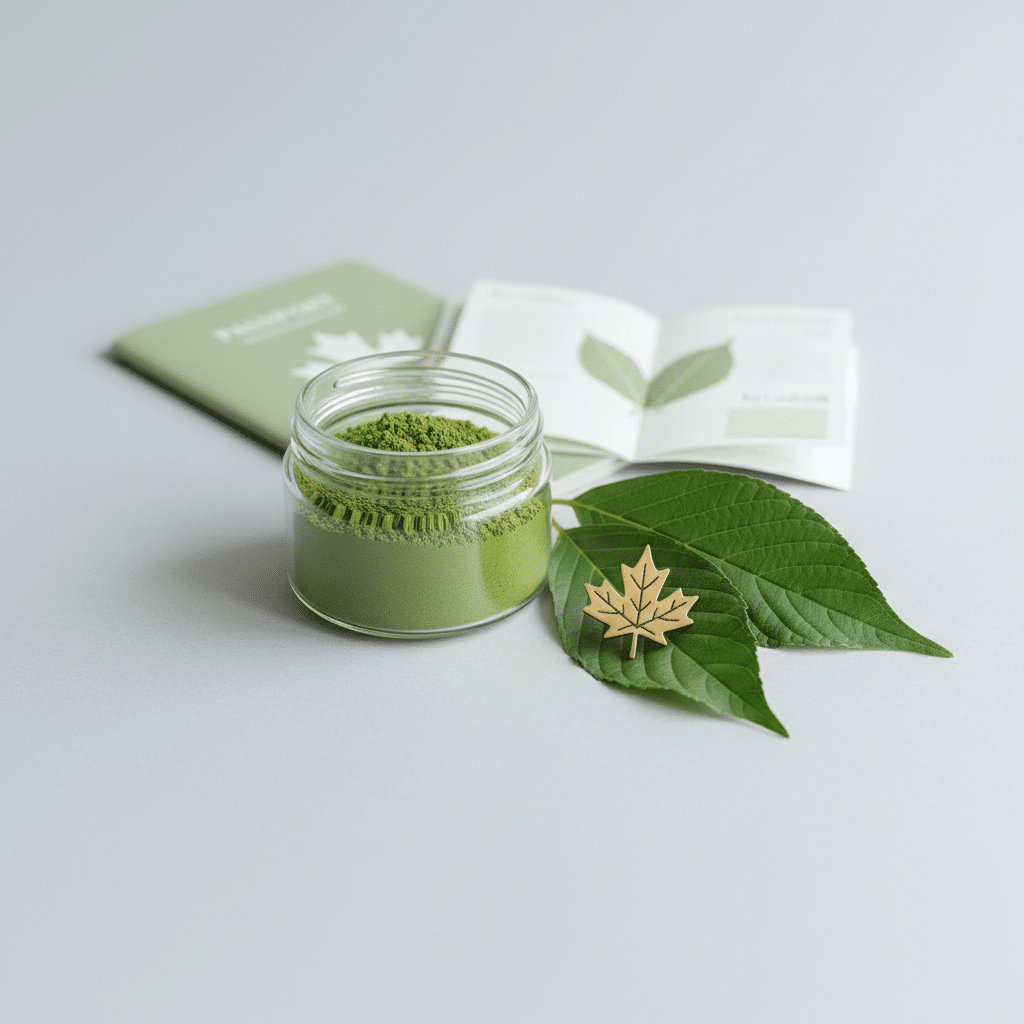
The moment a kratom consumer receives their package, they face an invisible yet critical question: Is this product safe, pure, and potent? In Canada’s evolving botanical product landscape, kratom lab testing serves as the essential bridge between uncertainty and confidence, protecting consumers while ensuring product integrity.
Laboratory testing transforms raw kratom leaves from Southeast Asian farms into verified, standardized products suitable for research and examination purposes. This scientific verification process examines everything from alkaloid content to microbial safety, creating a comprehensive safety profile for each batch.
Canadian kratom enthusiasts increasingly seek transparency in their botanical purchases. Quality testing protocols provide the detailed analysis needed to make informed decisions about kratom products intended for aromatic, research, and examination applications.
Essential Components of Kratom Lab Testing
Alkaloid Content Analysis and Potency Verification
Alkaloid analysis forms the cornerstone of comprehensive kratom testing protocols. Laboratories examine the concentration of primary alkaloids, particularly mitragynine and 7-hydroxymitragynine, to verify product potency and consistency. Total alkaloid content typically ranges from 1.2%-2.5%, with mitragynine levels between 0.5%-1.7% indicating quality products.
This alkaloid potency analysis methods ensure batch-to-batch consistency. Different kratom strains naturally contain varying alkaloid profiles, making standardized testing crucial for predictable results. Red vein varieties typically show different alkaloid concentrations compared to white or green strains.
Testing facilities measure these compounds using advanced chromatographic techniques. The results appear on Certificates of Analysis (COA), providing exact percentages for each detected alkaloid. This data helps researchers understand the chemical composition of their botanical samples.
Heavy Metal and Contaminant Screening
Heavy metal contamination poses significant safety concerns in botanical products. Kratom heavy metal testing Canada protocols screen for lead, mercury, cadmium, and arsenic – elements that can accumulate in plant tissues from contaminated soil or water sources.
Environmental factors in Southeast Asian growing regions sometimes introduce trace metals into kratom plants. Professional testing facilities establish strict limits for acceptable heavy metal concentrations, typically following pharmaceutical industry standards for botanical products.
Contamination screening extends beyond metals to include pesticide residues and other agricultural chemicals. Complete safety panels examine over 200 potential contaminants, ensuring the final product meets Canadian safety expectations for research-grade botanical materials.
Microbial Testing and Pathogen Detection
Microbial testing kratom products involves screening for harmful bacteria, yeast, mold, and other potentially dangerous microorganisms. Raw kratom leaves can harbor various pathogens during harvesting, processing, or storage phases.
Standard microbial panels test for:
-
E. coli and Salmonella – Dangerous bacteria causing serious illness
-
Total aerobic bacteria count – Overall bacterial load indicator
-
Yeast and mold levels – Spoilage and allergen concerns
-
Coliforms – Sanitation quality markers
Professional facilities maintain strict environmental controls during testing. Results must fall within established safety parameters before products receive approval for distribution. This testing protects end users from potentially harmful microorganisms present in untested botanical materials.
Laboratory Testing Methods and Procedures
Third-Party vs In-House Testing Protocols
Third party kratom lab testing provides unbiased verification through independent facilities with no financial stake in test outcomes. These laboratories maintain ISO accreditation and follow standardized protocols, ensuring consistent, reliable results across different batches and suppliers.
Independent testing eliminates potential conflicts of interest inherent in manufacturer-controlled testing. Batch numbers ensure traceability to lab results, as testers cannot assume repeat batches will automatically pass standards. Each new batch requires individual verification regardless of previous results.
In-house testing offers faster turnaround times but may lack the objective perspective of external verification. Many reputable suppliers combine both approaches – using in-house screening for preliminary quality checks while confirming results through independent third-party analysis.
High-Performance Liquid Chromatography (HPLC) Analysis
HPLC kratom analysis represents the gold standard for alkaloid quantification in botanical testing. This sophisticated technique separates individual compounds within kratom samples, allowing precise measurement of each alkaloid’s concentration.
The HPLC process involves dissolving kratom samples in specialized solvents, then passing the solution through chromatographic columns. Different alkaloids travel through these columns at varying speeds, creating distinct peaks on detection equipment. HPLC detects mitragynine levels with precision, a key component of alkaloid profiling.
Advanced HPLC systems can identify over 40 different alkaloids in a single kratom sample. This detailed chemical fingerprinting helps verify strain authenticity and detect potential adulteration with synthetic compounds or other plant materials.
Mass Spectrometry and Advanced Detection Techniques
Mass spectrometry enhances traditional testing by providing molecular-level identification of compounds. When combined with HPLC, this technique offers unparalleled accuracy in compound identification and quantification.
Inductively Coupled Plasma Mass Spectrometry (ICP-MS) accurately identifies trace heavy metals like mercury and lead. This mass spectrometry heavy metal detection method can measure contamination levels in parts per billion, far exceeding the sensitivity of traditional analytical methods.
Gas Chromatography-Mass Spectrometry (GC-MS) analyzes volatile compounds and residual solvents. These advanced techniques ensure comprehensive safety screening while providing the detailed chemical data researchers require for their botanical studies.
Safety Standards and Regulatory Guidelines
Canadian Health Regulations for Botanical Products
Canadian regulatory frameworks establish specific requirements for botanical product safety and marketing. Kratom cannot be marketed as a consumable product or promoted for therapeutic benefits without Health Canada approval. This regulation shapes testing requirements and product labeling standards.
Health Canada’s Natural Health Products Directorate oversees botanical product regulations. While kratom doesn’t hold approved status as a natural health product, suppliers must still meet basic safety standards for products sold as research materials or aromatic botanicals.
Canadian kratom quality standards require clear labeling indicating products are “not for human consumption” and intended solely for research, aromatic, or examination purposes. These regulations protect consumers while allowing legitimate research applications.
International Testing Protocol Standards
Global testing standards influence Canadian kratom lab testing protocols. ISO 17025 accreditation ensures laboratories maintain international quality management standards for testing and calibration services.
The American Kratom Association’s Good Manufacturing Practice (GMP) standards provide additional testing guidelines adopted by many Canadian suppliers. These protocols establish minimum safety requirements for processing, testing, and distribution.
Pharmaceutical-grade testing standards often serve as benchmarks for premium kratom testing. These elevated standards exceed basic regulatory requirements, providing enhanced safety assurance for research-grade botanical products.
Understanding Certificate of Analysis (COA) Reports
Key Parameters and Test Results Interpretation
COA kratom batch numbers provide the essential link between laboratory results and specific product lots. Each certificate contains unique identifiers allowing consumers to verify their exact product underwent the reported testing protocols.
Key COA sections include:
-
Alkaloid profile – Percentage breakdown of major compounds
-
Heavy metal results – Contamination levels for toxic elements
-
Microbial analysis – Pathogen and bacteria screening results
-
Moisture content – Product freshness and storage indicators
Test result interpretation requires understanding acceptable ranges for each parameter. Alkaloid percentages vary naturally between strains, while heavy metal and microbial results must fall within established safety limits.
Date Validity and Batch Tracking Systems
Fresh testing results provide the most accurate product assessment. COAs typically remain valid for 12-24 months, depending on storage conditions and product stability. Expired testing certificates may not reflect current product quality.
Batch tracking systems connect individual packages to specific laboratory reports. This traceability allows consumers to access relevant testing data for their exact product lot, rather than relying on generic or outdated test results.
Reputable suppliers maintain digital COA libraries, allowing customers to verify test results using their product’s batch number. This transparency builds trust while providing the detailed information researchers require for their botanical studies.
Quality Assurance Beyond Basic Testing
Ongoing Quality Control and Retesting Protocols
Quality assurance extends beyond single-point testing to include ongoing monitoring throughout the supply chain. Regular retesting protocols verify product stability during storage and distribution phases.
Gamma radiation treatment ensures every batch meets microbial safety standards before distribution. This gamma radiation kratom safety protocol eliminates harmful pathogens while preserving alkaloid content and product integrity.
Temperature and humidity monitoring during storage prevents degradation that could affect test results. Proper storage conditions maintain the alkaloid profiles and microbial safety verified during initial testing phases.
Advanced Testing Technologies and Future Developments
Emerging testing technologies continue improving kratom lab testing accuracy and efficiency. DNA analysis can verify species authenticity and detect genetic markers specific to different kratom varieties.
Spectroscopic methods offer rapid screening capabilities for large-scale operations. These technologies provide preliminary quality assessment while maintaining the accuracy of traditional chromatographic techniques for final verification.
Blockchain integration promises enhanced traceability for COA kratom batch numbers. This technology could create immutable testing records, further increasing transparency in the kratom testing process.
|
Testing Method |
Primary Application |
Accuracy Level |
Processing Time |
|---|---|---|---|
|
HPLC-UV |
Alkaloid quantification |
±2-5% |
2-3 hours |
|
ICP-MS |
Heavy metal detection |
±1-3% |
1-2 hours |
|
PCR Analysis |
Microbial identification |
>99% |
24-48 hours |
|
GC-MS |
Solvent residue analysis |
±1-2% |
3-4 hours |
Frequently Asked Questions
What specific tests should quality kratom lab testing include?
Comprehensive kratom lab testing should include alkaloid analysis (particularly mitragynine and 7-hydroxymitragynine), heavy metal screening for lead, mercury, cadmium, and arsenic, microbial testing for bacteria, yeast, and mold, and pesticide residue analysis. Additional tests may include moisture content and foreign matter detection.
How often should kratom batches undergo third party kratom lab testing?
Every batch requires individual testing regardless of previous results from the same supplier. Batch numbers ensure traceability to specific lab results, as environmental factors and processing variables can affect quality between different production runs.
What do acceptable alkaloid levels look like in professional kratom testing?
Total alkaloid content typically ranges from 1.2%-2.5%, with mitragynine levels between 0.5%-1.7% indicating quality products. These levels vary naturally between strains, with red varieties often showing different profiles compared to white or green strains.
Are there specific Canadian kratom quality standards for lab testing?
While Health Canada doesn’t authorize kratom for therapeutic use, Canadian suppliers must meet basic safety standards for botanical research products. Many follow international GMP standards and pharmaceutical-grade testing protocols to ensure product safety and quality.
How can consumers verify their kratom products underwent proper laboratory testing?
Look for COA kratom batch numbers matching your product packaging. Reputable suppliers provide accessible COA databases where customers can verify test results using their specific batch number. Certificates should be recent (within 12-24 months) and from accredited third-party laboratories.
Choosing Lab-Tested Kratom Products in Canada
Laboratory testing transforms kratom from an unknown botanical into a verified research material with documented safety and potency profiles. Canadian consumers benefit from suppliers who prioritize comprehensive testing protocols, ensuring every batch meets established safety standards.
The evolution of kratom lab testing continues improving product safety while supporting legitimate research applications. As testing technologies advance, consumers gain access to increasingly detailed product information for their botanical studies.
Professional testing creates the foundation for informed decision-making in kratom selection. Understanding COA interpretation and testing methodologies empowers consumers to evaluate product quality effectively.
Quality-conscious kratom enthusiasts in Canada can explore lab-tested options like Sunrise, Clarity, and other verified products from 365 Kratom Canada’s collection to experience the confidence that comes with comprehensive laboratory verification.



